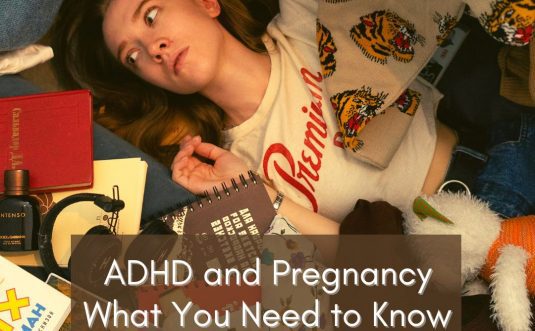As recognition of neurodiversity grows, the landscape of communication is evolving. While traditional text-based content may still be important, video has emerged as a powerful medium that truly understands and celebrates neurodivergent experiences. Far from being a limitation, neurodiversity represents a rich tapestry of cognitive differences that bring unique strengths and perspectives to our world.
The unique capabilities of video—from its ability to demonstrate complex concepts through visual metaphors to its capacity for delivering information at adjustable speeds—make it particularly well-suited to our diverse cognitive styles and processing preferences. Let’s explore how embracing our differences through inclusive video content offers stronger connection opportunities.
Contents
Understanding Neurodiversity
Neurodiversity encompasses a wide range of neurological variations, including autism spectrum disorder (ASD), attention deficit hyperactivity disorder (ADHD), dyslexia, and other cognitive differences, such as slower processing speeds, executive dysfunction, and misophonia. These variations aren’t deficits—they’re alternative ways of perceiving, processing, and interacting with the world.
Each of us brings extraordinary capabilities and insights that enrich our collective human experience. We are simply seeing the world differently, which can be an incredible asset to society at large, and our distinct communication preferences and processing styles need to be factored into content creation processes.
Why Video Works Brilliantly
Video content represents a revolutionary communication tool that speaks directly to diverse cognitive styles. Using this form of media to create learning materials enables content to be widely more accessible.
Autism struggles with interpreting real-time social interactions and communication, so being able to control the level and speed of information consumption is an important element. Video provides clearer visual demonstrations, and the ability to pause, rewind, and review content, mean personal reviews can be conducted at your own speed and comfort.
ADHD can affect our ability to concentrate, so the dynamic and engaging content of video can be more appealing than static text. The combination of movement, sound, and visual elements help to maintain attention and improve information retention, allowing complex concepts to become more accessible via multimedia.
Being able to break through traditional learning barriers is key to creating opportunities for different learning styles and information retention. The provision of a flexible learning experience minimises any information overwhelm, and gives back an important element of control which is of huge benefit to our neurodivergent community.
It’s estimated that between 15% and 20% of the global population is neurodivergent, yet so many businesses and educational facilities fail to consider neurodiversity when producing content. Neglecting the importance of making video content more widely accessible limits the receiving audience, general visibility and all important impact.
Designing Inclusive Video Content
Designing effective video content for audiences with varied cognitive needs, goes beyond mere accessibility—it celebrates our diversity. Inclusive videos that work for all viewers need brands to communicate more clearly and minimise mental burnout and stress for their users. There are further factors to keep in mind.
Communication Clarity
Information needs to be laid out in a user-friendly way with high-quality visuals, incorporating captions, to deliver information in a clear and engaging way. Processing complex instructions and detailed information can be difficult, so it’s vital that video content creation is straightforward and easy to understand. Simple, well-structured information helps to create a more supportive learning environment. We can engage confidently and effectively when the material:
- Uses precise, literal language
- Avoids abstract phrasing and complex jargon
- Delivers information directly and transparently
Sensory-Friendly Design
Certain sensory triggers and processing differences, can result in overstimulation from elements such as flashing lights, sudden loud noises, or unexpected sensory input. Bright or contrasting colors can also be difficult to process, potentially leading to sensory overload. So a consistent, sensory friendly design needs to consider these overwhelming elements that may be distressing or even physically uncomfortable. The cognitive load we are exposed to, can be reduced when thought is given to:
- Implementing a calm, subtle color palette
- Limiting to three complementary colors
- Eliminating sensory triggers
- Creating predictable visual experiences
Intelligent Content Structure
Breaking video content into easily digestible chunks is a further effective way to make information more accessible and user-friendly. Careful thought needs to be given to how users can seamlessly move through the content, without feeling lost or overwhelmed, by:
- Breaking content into chapters or shorter videos
- Providing clear navigation markers
- Allowing easy information retrieval
- Respecting diverse processing speeds
Beyond a One-Size-Fits-All Approach
It’s a common misconception that all neurodiverse people think alike. On the contrary, each of us brings a unique cognitive profile with distinct strengths, challenges, and preferences. It’s therefore important that the goals, strengths, and needs of learners are at the forefront of video content creation. Attention must be given to understanding audiences on a deeper level and actively collaborating with neurodivergent communities to create truly inclusive content.
By designing content that respects cognitive diversity, creators open doors to more effective, engaging, and meaningful communication. From training materials and online learning to marketing materials, video stands as a transformative medium capable of bridging communication gaps and celebrating the incredible diversity of human cognition. Such a dynamic, flexible platform needs to honor different ways of learning, understanding, and experiencing the world.
Annie Button is a freelance writer living in the UK. Learn more at https://www.anniebutton.co.uk.


 Danielle Sullivan
Danielle Sullivan



